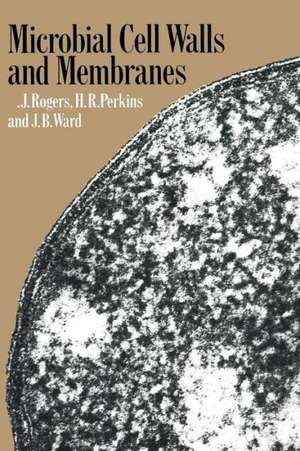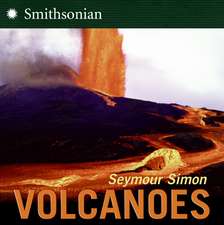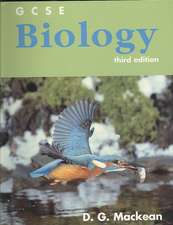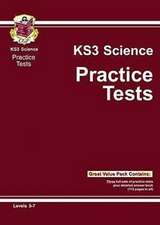Microbial Cell Walls and Membranes
Autor H. R. Perkinsen Limba Engleză Paperback – 28 feb 2012
Preț: 404.51 lei
Nou
Puncte Express: 607
Preț estimativ în valută:
77.40€ • 80.98$ • 64.30£
77.40€ • 80.98$ • 64.30£
Carte tipărită la comandă
Livrare economică 03-17 aprilie
Preluare comenzi: 021 569.72.76
Specificații
ISBN-13: 9789401160162
ISBN-10: 9401160163
Pagini: 580
Ilustrații: X, 564 p.
Dimensiuni: 155 x 235 x 30 mm
Greutate: 0.8 kg
Ediția:Softcover reprint of the original 1st ed. 1980
Editura: SPRINGER NETHERLANDS
Colecția Springer
Locul publicării:Dordrecht, Netherlands
ISBN-10: 9401160163
Pagini: 580
Ilustrații: X, 564 p.
Dimensiuni: 155 x 235 x 30 mm
Greutate: 0.8 kg
Ediția:Softcover reprint of the original 1st ed. 1980
Editura: SPRINGER NETHERLANDS
Colecția Springer
Locul publicării:Dordrecht, Netherlands
Public țintă
ResearchCuprins
1 Ultrastructure of bacterial envelopes.- 1.1 Introduction.- 1.2 The Gram-positive cell wall.- 1.3 The Gram-negative cell wall.- 1.4 Membrane morphology.- 1.5 Internal membranes.- 1.6 Specialized membrane systems.- References.- 2 Isolation of walls and membranes.- 2.1 Introduction.- 2.2 Isolation of walls and membranes from Gram-positive species.- 2.3 Separation of the components of the wall from Gram-negative species.- 2.4 Preparation of specialized intracytoplasmic membranes.- References.- 3 Membrane structure and composition in micro-organisms.- 3.1 General ideas of membrane structure.- 3.2 Some physical properties of membranes.- 3.3 Composition of microbial membranes.- 3.4 Proteins in membranes.- References.- 4 Membrane functions.- 4.1 Active components and functions of bacterial cell walls.- 4.2 Functions of the cytoplasmic membrane.- 4.3 Components of the electron transport chain.- 4.4 The coupling of energy flow to phosphorylation.- 4.5 Isolation and properties of Mg2+-Ca2+ ATPase.- 4.6 Vesiculation of membranes.- 4.7 Transport of metabolites and ions.- 4.8 Binding proteins.- 4.9 Mesosomal membrane.- 4.10 Outer membrane of Gram-negative bacteria.- References.- 5 Membranes of bacteria lacking peptidoglycan.- 5.1 Introduction.- 5.2 Mycoplasmas.- 5.3 Extreme halophiles.- 5.4 Bacterial L-forms.- References.- 6 Structure of peptidoglycan.- 6.1 Introduction.- 6.2 Modification of the basic peptidoglycan structure.- 6.3 Three-dimensional structure of peptidoglycans.- 6.4 Cell walls of prokaryotes without peptidoglycan.- References.- 7 Additional polymers in bacterial walls.- 7.1 Gram-positive bacteria.- 7.2 Gram-negative bacteria.- References.- 8 Biosynthesis of peptidoglycan.- 8.1 Introduction.- 8.2 Synthesis of nucleotide sugar precursors.- 8.3 The lipid cycle.- 8.4 Formation of cross-bridge peptides.- 8.5 Polymerization of disaccharide-peptide units.- 8.6 Transpeptidation: The formation of cross-links.- 8.7 D-Alanine carboxypeptidases.- References.- 9 Antibiotics affecting bacterial wall synthesis.- 9.1 Introduction.- 9.2 Phosphonomycin (Fosfomycin).- 9.3 Antibiotics inhibiting D-alanine metabolism in peptidoglycan biosynthesis: cycloserine, O-carbamoyl-D-serine, alaphosphin (L-alanyl-L-1-aminoethyl phosphonic acid) and the haloalanines.- 9.4 Bacitracin.- 9.5 Tunicamycin.- 9.6 The vancomycin group of antibiotics: vancomycin, ristocetins, ristomycins, actinoidin.- 9.7 ?-Lactam antibiotics: the penicillins and cephalosporins.- 9.8 Antibiotics inhibiting biosynthesis of wall polymers but whose site of action is not yet established.- References.- 10 Biosynthesis of other bacterial wall components.- 10.1 Biosynthesis of teichoic acids.- 10.2 Biosynthesis of other components of the Gram-positive bacterial wall.- 10.3 Biosynthesis of the lipopolysaccharides.- 10.4 Iipoprotein from the outer membrane of Gram-negative bacteria.- References.- 11 The bacterial autolysins.- 11.1 Introduction.- 11.2 Bond specificity and distribution of bacterial autolysins.- 11.3 Purification and properties of the autolytic enzymes.- 11.4 Location of autolytic enzymes.- 11.5 Function of autolysins.- References.- 12 Cell walls of Mycobacteria.- 12.1 Wall composition.- 12.2 Adjuvant and other immunostimulant properties.- 12.3 Antitumour activity.- References.- 13 Cell walls of filamentous fungi.- 13.1 Introduction.- 13.2 Carbohydrates in the wall.- 13.3 Wall composition and dimorphism.- 13.4 Melanins and depsipeptides.- 13.5 Conclusion.- References.- 14 Biosynthesis of wall components in yeast and filamentous fungi.- 14.1 Introduction.- 14.2 Biosynthesis ofchitin.- 14.3 Biosynthesis of mannan.- 14.4 Biosynthesis of glucan.- References.- 15 The cell wall in the growth and cell division of bacteria.- 15.1 Introduction.- 15.2 Growth of streptococcal cell walls.- 15.3 Growth of the walls of Gram-positive rod-shaped bacteria.- 15.4 Growth of the Gram-negative cell wall.- 15.5 Growth of cytoplasmic membranes.- 15.6 Mutants with disturbed surface growth.- 15.7 Helical growth of bacteria.- References.






